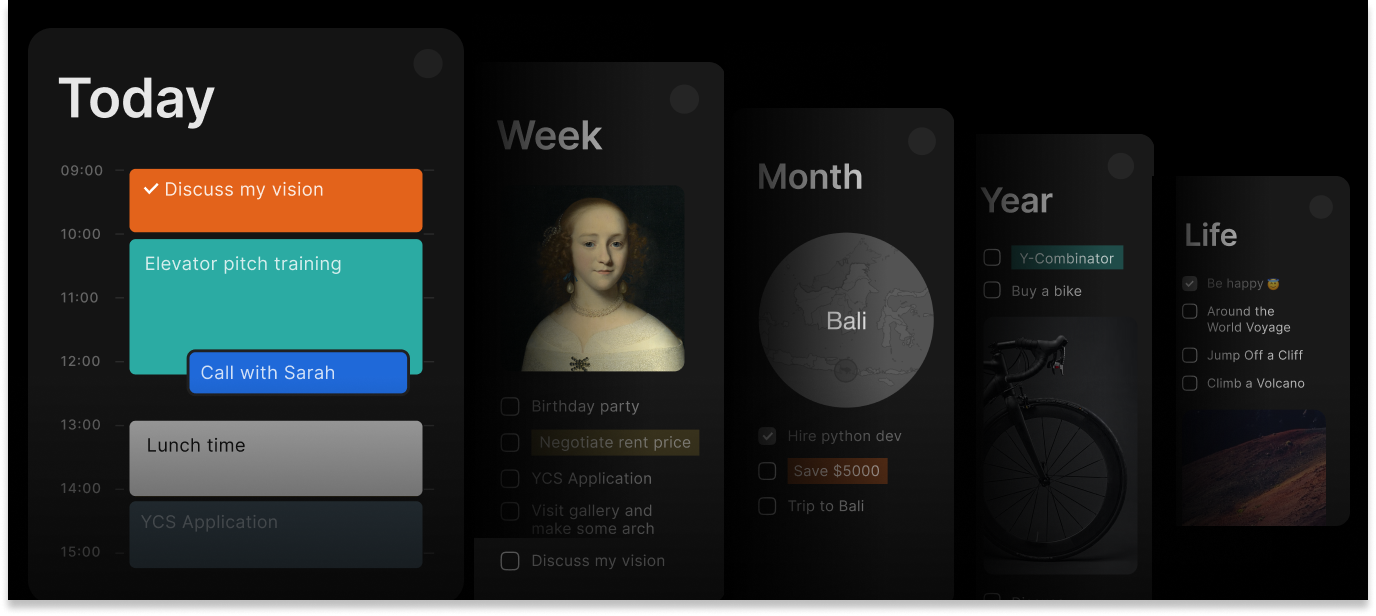In Transition Times: How to navigate changes with confidence

Big shifts happen. Whether the changes are economic, political, or relating to your personal life, it's essential to find ways to adapt while staying true to yourself. In this article, we will explore three frameworks that have helped many business owners and creatives navigate change and their personal transformation journey.
These frameworks are taught in business schools such as Harvard and Stanford, and can be applied to almost any situation in life. They can be helpful in moments of job loss, relocation to another country, or starting a new career. Shifts do not necessarily have to be negative to feel hard; even big excitement about change could lead to a huge stress response, and it’s beneficial to have information about emotional resilience tools already. We’ll cover William Bridges’ Transitions Model, which includes an understanding of the three imaginative zones you’ve been placed in a personal transformation; Carol Dweck’s Growth Mindset, introducing the growth mindset as a tool for resilience; and the ADKAR Model for Change Management. Ultimately, you will find a detailed 30-Day Reset Plan that combines all the strategies into a step-by-step guide, ready to be implemented.
1. Understanding Transitions: Why Change Feels So Hard
If you’ve ever felt disoriented after a major life change, even one you desired, you’re experiencing a profoundly human emotion. Maybe you achieved the promotion you’d been working toward for years, only to feel anxious and out of place. Or perhaps you finally left a toxic relationship and, while feeling relieved, you’re also mourning what you’ve lost. Or you might be reading this while navigating a change that was thrust upon you, wondering why moving forward feels so incredibly difficult.
Here’s what’s going on beneath the surface: psychologist William Bridges discovered a crucial distinction between change and transition. Change is external—the new job, the ended relationship, the cross-country move. Transition is the internal psychological process of adapting to that change, letting go of familiar identities, and growing into who you’re becoming. Your brain, wired for predictability and control, naturally resists this messy, uncertain process. Research confirms that major life transitions activate the same stress response as traumatic events, even when the changes are positive.
Let’s explore how she (and you) can navigate these life transitions using proven frameworks to find confidence and direction.
2. William Bridges’ Transitions Model: Navigating Change
Life transitions challenge us to adapt and grow. William Bridges’ Transitions Model provides a clear framework for navigating life transitions by focusing on the internal journey of change. Transitions involve three emotional stages: Ending, Neutral Zone, and New Beginning, which shape personal transformation. Let’s explore each stage and how to apply them to your journey.
- Ending: Releasing the Past
- Neutral Zone: Embracing Uncertainty
- New Beginning: Stepping Forward
Every transition begins with loss. This stage involves letting go of a familiar role, routine, or identity, which can spark grief or resistance. You might ask, What am I losing? Acknowledging these feelings is crucial for moving forward.
The Neutral Zone is a liminal space of confusion and possibility. You’re no longer your old self but not yet your new one, wondering, What’s next? This stage, though uncomfortable, fosters reflection and opens doors to new paths, building resilience for personal transformation (it actually could be adapted to your project or business).
The New Beginning emerges when you embrace a new identity or direction. Hesitation is common. Can I do this? But small, intentional steps help you commit to a fresh start, turning uncertainty into opportunity.
3. Carol Dweck’s Growth Mindset: Reframing Challenges for Growth
The next workflow is developed by Stanford psychologist Carol Dweck and highlights the difference between a fixed mindset, where one believes their abilities are unchangeable, and a growth mindset, where challenges are seen as opportunities for learning and development. Adopting a growth mindset allows you to transform obstacles into opportunities for personal growth and face life’s changes with courage. Let’s delve into how adopting this mindset can shift your perspective.
Fixed vs. Growth Mindset
A person with a fixed mindset believes that their abilities are unchangeable: I’m either good at this or not. This perspective can trap you in fear during transitions, making setbacks or failures seem unchangeable. In contrast, a growth mindset sees abilities as flexible: I can grow through effort. It encourages viewing challenges as chances to evolve. Understandably, it can be hard to see the silver lining in something big and overwhelming. However, knowing that it won’t last forever can help. This shift builds emotional resilience to face uncertainty head-on.
Why Growth Mindset Matters in Transitions
In life pivots, a growth mindset transforms setbacks into growth opportunities. Instead of thinking, This is too hard, you ask, How can I grow from this? It fosters persistence, openness to new skills, and confidence in adapting. This mindset makes the uncertainty of change a catalyst for personal transformation, empowering you to move forward.
4. The ADKAR Model: A Structured Path Through Change
While Bridges' model helps us understand the emotional journey of transitions and growth mindset reshapes our perspective, we still need a practical roadmap for navigating change. Enter the ADKAR Model, developed by Jeff Hiatt, founder of Prosci, in the mid-1990s after studying the change patterns of more than 700 organizations.
ADKAR is an acronym representing five sequential building blocks that individuals need to move through for lasting change: Awareness (understanding why change is needed), Desire (motivation to support the change), Knowledge (information about how to change), Ability (skills to implement new behaviors), and Reinforcement (efforts to sustain the change). What makes this model particularly powerful is its focus on the individual level, recognizing that organizational or personal transformation happens one person at a time.
Notice how ADKAR doesn’t rush Nicole through her feelings or demand immediate action. Instead, it provides structure for her gradual movement from uncertainty toward intentional next steps. Combined with understanding her transition stage and maintaining a growth mindset, Nicole now has a comprehensive toolkit for navigating this major life change.
Find your 30-day reset plan combining ADKAR, Bridges’ Transitions, and Growth Mindset, click here. Remember, these frameworks are powerful, but continuity matters most—move forward at your pace and rest when you need to.
Read next



